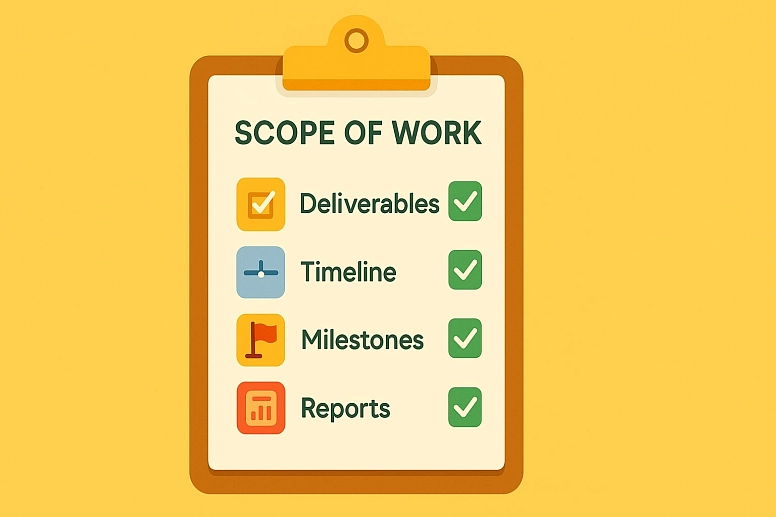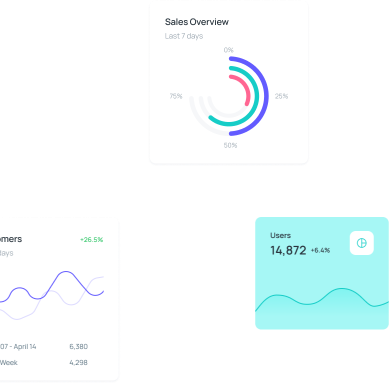How to Write a Scope of Work (With Examples and Template)
5,776
Wed, Apr 30
Projects

Ingrid Johansen
Copywriter

If you’re wondering what’s a scope of work, it’s exactly what you’re going to do for your customer or client. Simply put, when you create this project outline, you need to include not only what you will do but also the materials, the responsibilities of everyone involved, the timeline, and all the steps needed to get the job done as part of your project management process.
If you’re a perfectionist, you’re going to love a work scope. After all, with this tool, there aren’t any misunderstandings about the project since everything is specified in detail. Below, you’ll find examples of scope of work and learn how to write a scope of work document.
Scope of Work Meaning
While we’ve touched on what a scope of work is, it’s worth digging a little deeper. Let’s break it down properly, one step at a time.
A scope of work is simply a document that lays out every detail of a project—from the tasks to the deadlines to who’s responsible for what. Just to give you an idea, many businesses use it when they’re putting together a service proposal for customers or clients or outlining project management workflows. It helps customers feel secure because they know exactly what they’re getting, how they’re getting it, and when they’re getting it from you. If you think about it, a project outline lets your potential client see exactly what you’re offering—and set their expectations from the start.
When in doubt about whether to include a detail—include it.
What to Include in the Scope of Work Document
When you’re putting together a scope of work—or even a rough draft—you want to be sure you’re covering the important stuff. Think about the small things that could cause confusion later if you don’t spell them out now. It’s always better to be too clear than not clear enough. To help you cover your bases, here are a few important pieces you’ll probably want to include. Of course, you can tweak the list based on what your project actually needs.
Pro tip: If you want an easier way to manage your scope of work details, you can organize everything—from deliverables to timelines to reports—directly inside a project management platform like Lua CRM. It helps you keep tasks, milestones, and client expectations aligned without needing multiple documents.
#1: Deliverables:
The deliverables are the number one reason for the project. Simply put, it’s what you’ll deliver to the client at the end.
Keep in mind: the deliverable can be anything—a document, a piece of software, a product, a report, or something else entirely. You just need to make it clear here as part of your project management process.
#2: Timeline:
When you’re putting together your scope of work, don’t forget the project timeline.
Map it out from kickoff to final delivery.
Breaking the project into clear phases or steps makes everything easier to track—and way easier to manage later with your project management tools.
If you want to make your timeline even stronger, add a visual.
Something simple, like a Gantt chart, can help everyone see the bigger picture and know exactly what’s coming next.
#3: Milestones:
If you’ve been around project work for a while, you already know how much milestones matter—especially when a project starts getting bigger and a little more chaotic from a project management perspective.
If you’re newer to larger projects, here’s a tip:
Set a milestone every time you wrap up a major phase.
It’ll make it easier to track progress and catch problems before they snowball. It’ll make tracking progress way less stressful.
#4: Reports:
Reports are a big part of keeping everyone on the same page.
Be clear about what reports you’ll send, how often you’ll send them, and what they’ll actually cover.
And when we say "reports," we’re talking about all kinds—variance reports, progress updates, status check-ins, whatever fits the project.
Pick the ones that make the most sense, and spell it out clearly so nobody’s left guessing.










